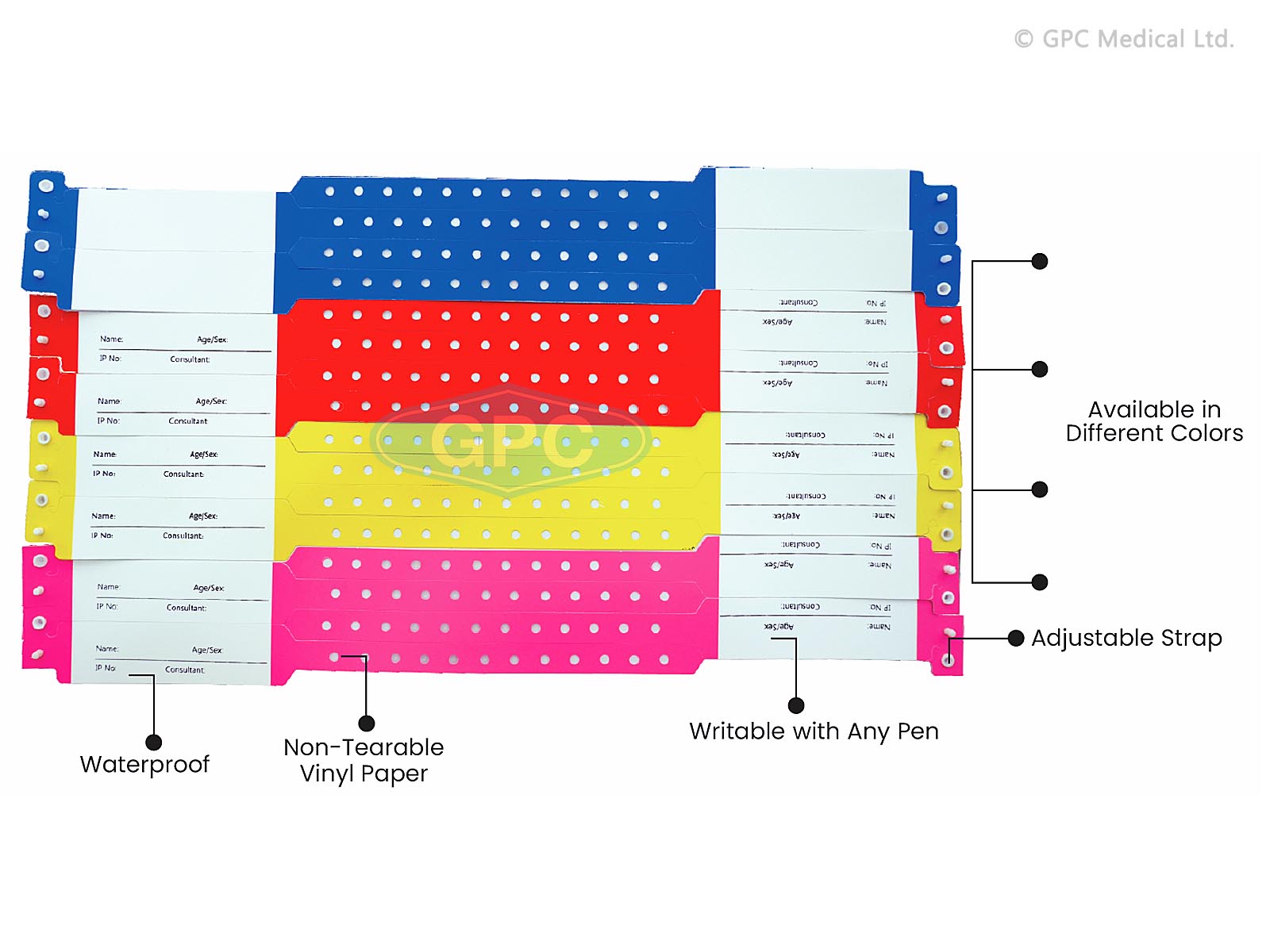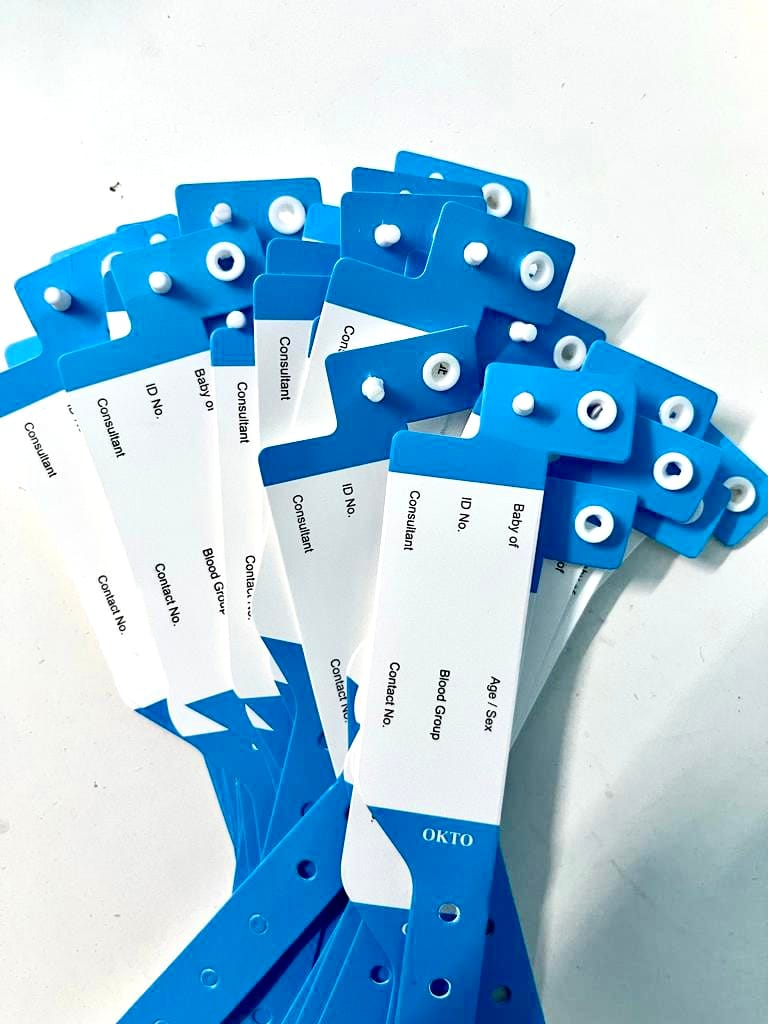The Function of Patient Identification Band in Making Certain Accurate Medical Records
Streamlining Individual Treatment With Effective Identification Bands
The application of effective recognition bands is a pivotal element in boosting client treatment within medical care settings. These bands not just serve to alleviate the risks related to person misidentification but also simplify communication among medical employees, thereby promoting a more secure atmosphere. Numerous sorts of identification bands deal with details needs, from resilient wristbands for grownups to specialized bands for infants and critical cases. As the landscape of individual recognition evolves, one must take into consideration the implications of these systems on total healthcare distribution and patient end results. What innovations await in this important location?
Importance of Individual Recognition
Making sure precise individual identification is vital in health care settings, as it directly influences the safety and security and top quality of treatment given. Misidentification can bring about major mistakes, including providing the incorrect medication, carrying out wrong treatments, or miscommunicating important patient information. Such mistakes not just jeopardize person safety but can likewise lead to legal ramifications and decreased trust in medical care systems.
Reliable client identification is basic to establishing a protected atmosphere where individuals get appropriate and customized care. It helps with the accurate documentation of case histories, allergic reactions, and treatment strategies, making certain that health care carriers have access to vital details whatsoever times. Robust recognition protocols aid enhance interaction among clinical personnel, enhancing collaboration and lowering the risk of errors.

Types of Identification Bands
Recognition bands play a critical role in keeping precise patient records and improving safety within health care environments. Various kinds of identification bands are used to accommodate the particular demands and requirements of different individual populations.

An additional kind is the ankle joint band, which is especially valuable for newborns and infants, making sure that identification continues to be intact also during treatment treatments. Specialty bands, such as those for allergic reaction alerts or drop risk indications, give extra layers of safety by attracting immediate focus to vital person conditions.
Just recently, digital recognition bands have acquired popularity, including barcodes or RFID modern technology that can be scanned to rapidly fetch patient information. These bands streamline workflows and reduce the danger of human mistake throughout person identification processes.
Benefits of Reliable Identification
Effective identification of individuals via making use of identification bands contributes considerably to overall client safety and care quality. By guaranteeing that each client is accurately determined, medical care service providers can efficiently match medical treatments and procedures to the correct individual, minimizing the threat of errors. This is especially essential in settings with high patient turn over, where the potential for misidentification is greater.
Moreover, effective recognition bands improve communication amongst medical care groups. Precise and clear client go identification cultivates partnership and ensures that all employee know a client's certain demands and case history. This communication is essential for supplying collaborated treatment, especially in emergency situation circumstances where time is vital.

Inevitably, efficient recognition via making use of identification bands not only safeguards patients but additionally advertises a culture of safety within health care centers (Patient Identification Band). By focusing on exact recognition, medical care companies can enhance results and enhance the total client experience
Executing Identification Equipments
While the significance of client identification is well recognized, the execution of robust identification systems positions a complicated challenge for medical care organizations. Establishing reliable recognition systems needs an extensive approach, incorporating innovation, workers training, and process combination.
First, organizations have to choose appropriate recognition technologies, such as barcode scanning, RFID, or biometric systems. Patient Identification Band. These modern technologies must be assessed based upon cost, usability, and compatibility with existing infrastructure. A pilot program can assist recognize prospective concerns prior to major application
Next, detailed training for team is crucial. All workers must comprehend the relevance of precise patient identification and be competent in using the picked modern technologies. Normal training updates and assessments can strengthen ideal techniques and ensure ongoing compliance.
Furthermore, medical care companies must develop standardized procedures for client recognition throughout all divisions, improving and minimizing inconsistencies interaction. Normal audits can discover this aid identify spaces in adherence to these methods.

Inevitably, a reliable application of identification systems not only enhances person safety and security yet likewise fosters a society of accountability and persistance within health care settings, making certain dependable and consistent patient treatment.
Future Trends in Patient Identification
Innovations in innovation are readied to revolutionize patient identification techniques in health care settings. The assimilation of biometric identification methods, such as fingerprinting and face acknowledgment, is expected to boost accuracy and safety. These innovations can considerably lower the threat of misidentification, making certain that clients obtain the proper therapies and drugs.
In addition, the application of blockchain technology for person records is obtaining traction. This decentralized strategy can offer a secure and tamper-proof approach for taking care of person identities, therefore improving accessibility to critical info across different medical care companies.
Another pattern is the raising use of mobile wellness applications that take advantage of QR codes for patient recognition. These applications allow for real-time updates and simple accessibility to client data, encouraging health care specialists to make informed decisions quickly.
In addition, synthetic knowledge (AI) is positioned to play a vital role in assessing client recognition information, identifying patterns, and predicting prospective identification errors prior to they happen.
As these modern technologies advance, they assure not only to boost individual safety and security however additionally to improve the general performance of health care distribution systems. Welcoming these advancements will be critical for future-proofing patient care techniques.
Conclusion
To conclude, effective recognition bands are crucial for improving patient safety and security and care quality within medical care settings. By decreasing the risks connected with misidentification, these bands facilitate timely and exact info access, ultimately improving communication among health care companies. The application of robust identification systems not only cultivates a society of security but also placements health care establishments to adjust to future trends in person identification innovation, guaranteeing optimal outcomes for people in varied professional settings.
As the landscape of individual identification evolves, one should take into consideration the implications of these systems on total health care distribution and client outcomes.Effective individual recognition is essential to establishing a secure environment where individuals get individualized and appropriate treatment. Inevitably, prioritizing reliable patient recognition techniques not just promotes a culture of security yet additionally adds to boosted individual end results and overall contentment with healthcare services.
Reliable identification of people through the use of recognition bands contributes significantly to overall person safety and care top quality. The execution of robust recognition systems not only promotes a society of safety and security however also placements health care establishments to adapt to future patterns in individual recognition technology, making sure ideal end results for clients original site in diverse scientific atmospheres.